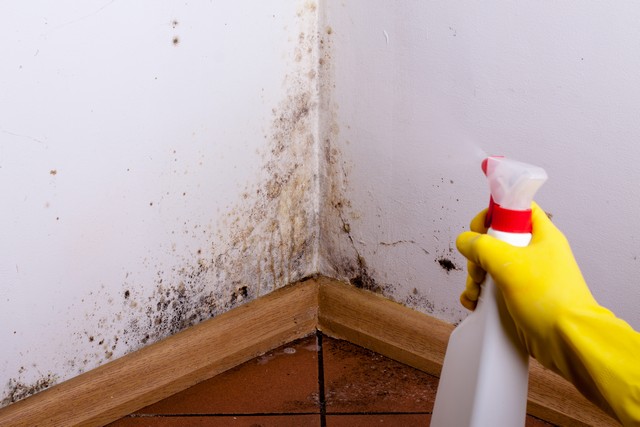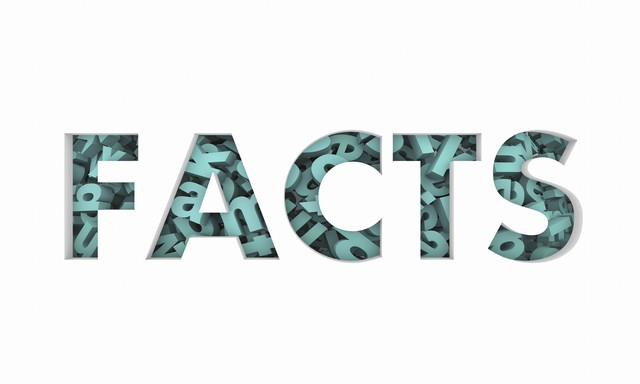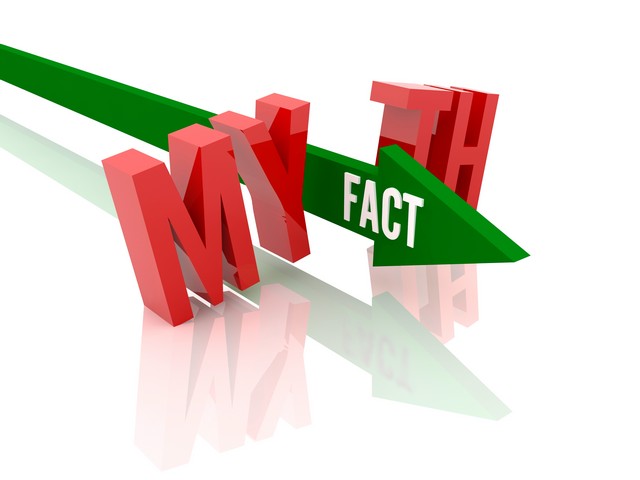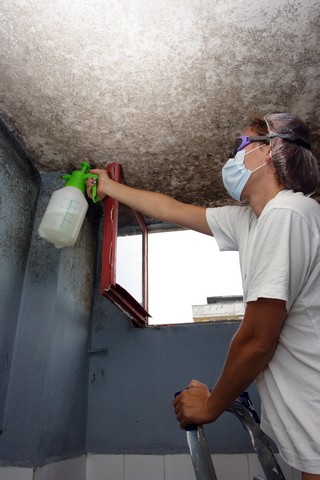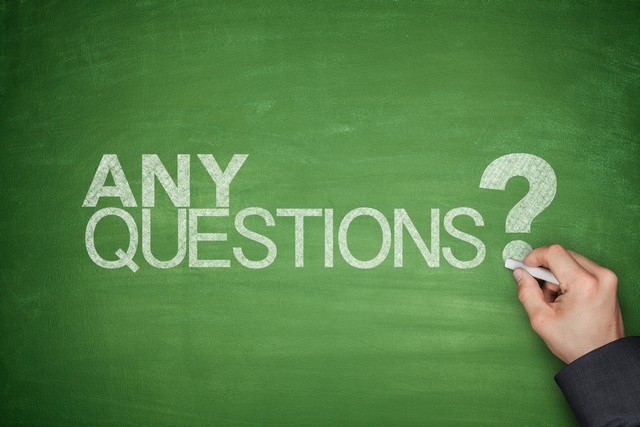The Myth Of Killing Mold With Bleach!
The initial instinct when you find mold is usually to reach for a spray bottle and try to kill it with bleach. Our advice, don’t panic and never reach for a bleach bottle, particularly if the mold is on porous materials like drywall. As stated by mold survivor, Christa Upton:
Don’t “kill” or spray mold! Instead, properly remediate it and hire a professional with experience and references that knows what they are doing…. We “killed” mold, sprayed with Lysol, bleached sub-floor and ran fans, replaced carpet but left mold in the sub-floor, walls, etc. Eight months later I was so sick I could not get out of bed….Not one spray has been shown to denature these toxins. Some sprays appear to make toxins worse or more airborne. Humans cannot smell most mold toxins, especially after the mold is “dead.” They are so small that they cannot be seen. They are so tiny that they generally cannot be removed with air purifiers or filters. But they are deadly.
According to Michael Pinto, CEO of Wonder Makers Environmental:
“Killing mold, but leaving the residue in place, is not acceptable. Since many health impacts can be triggered by exposure to both live and dead mold spores, the source and secondary contamination must be removed.” (MOLD INDOORS: Killing it is Not Enough)
One of the problems with the mold is the fact that there is so much bad information on the Internet that recommends that it is safe to try to kill mold. In the case of Christa, this proved to be dangerous to her health.
Unfortunately, because of the lack of regulation in the mold remediation industry, even some contractors believe that killing mold is the answer. Generally speaking, these contractors are poorly trained and really do not understand mold. There is no “quick fix” for mold contamination situations. As a consumer, you need to be cautious about hiring contractors that offer magical solutions that involve just spraying a chemical to kill the mold dead. The purpose of this article is to educate you on mold basics and expand on why killing mold is not the answer.
5 Mold Facts You Need To Be Aware Of!
- Mold thrives when moisture is present. Removing mold without addressing the cause of the problem, ie. identifying the moisture source is not a long term solution. Before any mold removal, the moisture problem must first be found and fixed.
- Exposure to mold spores, both live and dead, and their byproducts like microbial volatile organic compounds (MVOCs), mycotoxins, connecting filaments, etc. can cause illnesses ranging from minor allergic reactions, respiratory problems like asthma and sinusitis, to more serious, life threatening illnesses.
- With respect to health, every individual responds to mold differently. Some people get sick, others don’t. A little bit of mold can make some residents of a property sick, but will not have an impact on others. Research has shown that 25% of the population have a genetic predisposition to mold illness and the condition known as Chronic Inflammatory Response Syndrome (CIRS).
- Mold is a biological agent that will continue to grow as long as the right conditions exist. This is the reason that mold is such a concern because it will continue to thrive and grow unless it is removed and the underlying moisture cause is fixed. In short, ignoring a mold problem will make the situation worse and pose more dangers.
- Contractors trained in mold removal, refer to the process as “remediation” because they have invested in specialized training and equipment and take precautions to prevent the spread of the mold in other parts of the building. Mold remediation specialists will never recommend a “quick fix” because they understand that relying on mold sprays, bleach, biocides, and fungicides are an ineffective “short cut” to mold removal.
The Bleach Myth About Killing Mold!
“Perhaps the most misunderstood aspect of bleach when proposed as a cleaner or sanitizing agent is that its effectiveness is greatly reduced in the presence of organic material. To be a successful sanitizer, bleach must be used on clean materials and surfaces. This is why bleach products are used in the laundry after the wash cycle or in a commercial kitchen as a component in the third sink after the dishes have been washed and rinsed. The efficacy of bleach as a sanitizer is also compromised by heat and light. Despite the fact that the chlorine odor may linger for some time after use, bleach loses strength so quickly that it is not considered to have a residual effect that would prevent future bacterial or fungal growth.” (Michael Pinto, Why Restoration Professionals Should Avoid Using Bleach)
One of the benefits of the Internet is it allows anyone to search for a topic of interest and find the information they are looking for.
Unfortunately, with respect to mold removal, the bleach myth is perpetuated on the Internet on countless websites.
Bleach may have some impact on non-porous materials, like bathroom tiles, but bleach is completely ineffective on porous materials:
“If you spray bleach all over your “black toxic mold” you won’t kill every single spore….To kill every single mold spore using bleach, for example, you’d have to use such a high concentration of disinfectant and you’d have to keep it on the surface for so long that more likely you’d damage the structure – and still miss some toxic spores.” (How to Kill Mold – Do We Want to? Is Dead Mold Dangerous?)
Other reasons we do not recommend the use of bleach:
- Bleach does not address the cause of the mold problem!
- Bleach is dangerous!
- Bleach evaporates!
Bleach Does Not Address The Cause Of The Mold Problem!
Experienced mold removal specialists understand that the most effective way to deal with mold is to first find the moisture source and make sure it is fixed.
The next step is to remove the mold contaminated porous materials.
Proper removal of mold contaminated materials like drywall, carpet, soft goods, insulation, and other porous materials is essential because mold has hyphae, which are basically roots that embed themselves in the material.
This is the reason that bleach does not work. Bleach may kill some of the surface mold, but it will not be able to penetrate and kill the roots.
The other reason bleach is a problem is that it is diluted with water. Spraying this is counter-productive because water is an essential ingredient mold needs to grow.
Keep in mind, even if another biocide or fungicide is sprayed on the material, killing the roots, the material will still be contaminated with dead spores. The best course of action to permanently deal with a mold problem on porous materials is to properly dispose of the contaminated material.
Bleach Is Dangerous!
When you are using bleach you should always wear gloves, goggles, and a respirator for three key reasons.
- Bleach is a corrosive that could irritate and damage your skin.
- During the spraying and evaporation process, bleach releases chlorine gas that will impact the eyes and respiratory system.
- One of the by-products of chlorine bleach are dioxins, linked to cancer.
If you intend to use bleach for household cleaning projects, never mix it with other cleaning solutions or detergents that contain ammonia because toxic fumes will be produced.
Bleach Evaporates!
The core ingredient of bleach is chlorine. Over time, chlorine can evaporate and escape through the plastic container. In short, the longer bleach sits, the more ineffective it will become because the chlorine dissipates.
Dead Mold Spores Are Harmful!
“Even if in theory we could “kill” every spore, the assumption that they are unimportant is highly questionable. “Dead” spores often contain allergens or toxins that are just as harmful to someone breathing them or getting such mold in one’s eye or in a cut, as before….The object is not to “kill” mold, it is – to remove the mold reservoir in the building by physical cleaning or in cases of items that can’t be cleaned, such as drywall, soft goods, carpets, furniture, or insulation, remove the moldy material – to identify the cause and make sure that’s been corrected.” (How to Kill Mold – Do We Want to? Is Dead Mold Dangerous?)
If you have a mold problem, contact Mold B Gone. We are experts at IAQ testing, finding the mold, identifying the moisture source causing the mold, removing the mold, and most importantly, preventing future mold growth using our proprietary mold prevention system chemical line backed by a minimum guarantee of 1 year.
Got Mold Questions?
Questions? Call 470-545-4467, send us an e-mail, or contact us on FaceBook! We look forward to serving you. 🙂
Are Dead #Mold Spores Dangerous? | Atlanta GA | Mold-B-Gone https://t.co/n5mZjbQnbq PLEASE RETWEET pic.twitter.com/0t6G2yAq0q
— Mold B Gone (@moldbgonega) August 1, 2018


